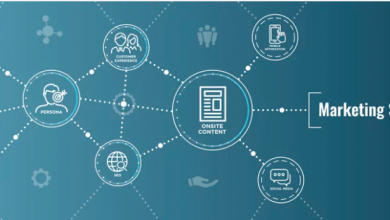Continuous Localization in The Age of AI and Automation

Source: https://unsplash.com/photos/RYyr-k3Ysqg
In today’s hyper-connected world, where organizations and individuals function globally, successfully dealing with people who speak various languages is becoming increasingly crucial. Language barriers, on the other hand, can be a significant hurdle to making contacts, conducting business, or simply gaining access to vital information. This is where continuous localization comes into play, and it has been altered thanks to recent breakthroughs in artificial intelligence (AI). AI and automation have revolutionized the localization process, making it more efficient, accurate, and cost-effective.
AI-powered localization technologies are revolutionizing how the material is translated and continuously localized, from simple text translation to advanced voice recognition and natural language processing.
In this post, we’ll look at how AI is affecting continuous localization and how it’s transforming how we communicate in the digital era.
The Age of AI
Artificial intelligence is more than simply a fantastic technological marvel. Artificial intelligence, in terms of technology and services, is a major changer for the content business and the language sector. Unsurprisingly, it has had and continues to influence the people, processes, and technology engaged in localization. In the early days of AI, machine learning (ML), and machine translation (MT), such as enhanced versions of online dictionaries and glossaries, text conversion was straightforward and automated. That moment has come and gone.
Neural networks propel ML and MT, bringing them closer to functioning and acting like human brains. Although AI is getting closer to mimicking human behavior, it cannot entirely replicate it and has not yet replaced humans. ML and MT have made tremendous strides in localization in recent years. These two AI branches have significantly altered how localization teams and individuals work. They have also changed how effective consumer experiences are delivered in local marketplaces. As illustrated by the growth of multilingual conversational AI, AI-driven localization aims to create value and shape local experiences. Machine-to-human (M2H) interactions are becoming increasingly prevalent and natural due to chatbots and voice assistants. With information in the customer’s native language, AI-driven localization makes them more relevant and engaging.
Thanks to AI and machine intelligence, the translation and localization industry is undergoing a rapid shift today. AI-powered technologies can now properly recognize idioms, subtleties, and cultural references in full texts in seconds. These tools have dramatically improved the efficiency and precision of translation and localization, making communication across language barriers easier. However, as with any new technology, there are hurdles and ethical concerns to be addressed as we move forward in the exciting and quickly expanding field of continuous localization management.
The Advantages of AI-Assisted Localization
Individuals and corporations alike profit from the adoption of AI-powered localization solutions. Here are some of the primary benefits:
- Cost-effective: AI-powered translation and localization technologies can help firms save money by minimizing the need for human translators and localization experts.
- Increased Efficiency and Speed: The speed with which AI-powered translation and localization can translate text is one of the most significant advantages. AI can translate entire documents in seconds, allowing businesses to engage with their global audience more effectively and efficiently.
- Accuracy: AI-powered translation and localization technologies can recognize subtle linguistic nuances, idiomatic expressions, and cultural references, resulting in more accurate translations.
- Improved Client Experiences: A key component of providing a pleasant customer experience is localization. Businesses can rapidly and easily localize content for various markets using AI-powered technologies, which helps to boost engagement and consumer happiness.
- Increased Productivity: AI-powered solutions help businesses create more content in less time, allowing them to remain ahead of the competition.
- Scalability: Artificial intelligence-powered translation and localization can quickly scale to meet the needs of organizations of all kinds, making it a viable option for small and large businesses.
- Greater Accessibility: Businesses and individuals can communicate more readily across language boundaries thanks to AI-powered translation and localization, providing greater accessibility and diversity.
While significant limitations and ethical concerns remain, the benefits of AI and automation in localization are undeniable. Individuals and businesses may improve their communication and engage with audiences worldwide by leveraging the power of AI, breaking down language barriers, and encouraging global understanding.
Continuous Localization Using AI and Automation
Incorporating AI and automation has resulted in a more streamlined and efficient procedure for continuous localization. Here are some of the ways AI and automation are transforming this field:
- Translation and Transcreation: AI-powered localization technologies combined with automation can translate content rapidly and precisely while considering cultural context, idioms, and nuances. This expedites and enhances the localization process.
- Continuous Improvement: AI analytics can analyze user behavior and feedback, allowing businesses to make data-driven decisions to enhance their localization strategy over time.
- Content Management: Automation systems can detect and indicate information that requires localization as soon as it is created or modified, ensuring that nothing gets through the cracks.
- Terminology Management: AI can assist in maintaining consistent terminology usage and ensuring that localized material adheres to your brand’s style guide.
- Testing: Quality assurance tests, such as grammar and consistency, are more efficient than manual reviews, lowering the risk of errors.
Integrating AI-powered Localization Technology Into Business Environments
The continued advancement of ML and MT in reliability and agility is improving accessibility to a broader audience and making it more applicable to a wider range of disciplines. While most of these technologies’ heavy users are still localization professionals, customized ML and MT services via programming interfaces (APIs) have gradually spread in recent years. Connection and integration options with infrastructures enable MT for various applications, including but not limited to email, social media, chat capabilities, and knowledge bases. The predicted utility of machine translation should be evaluated against the economic implications and technological challenges unique to each enterprise.
It is critical to constantly evaluate the beneficial usage of AI in localization with two goals in mind. ML and MT should add value to enterprises through automation, acceleration, communication, and integration. Second, to improve enterprises’ delivery of local customer experiences, ML and MT must be leveraged, integrated, trained, and tailored.
Conclusion
In the age of AI and automation, continuous localization has become a critical component of global business operations. Companies that adopt these technologies get a competitive advantage by quickly and efficiently engaging with varied markets while maintaining high quality and consistency standards. As AI and automation progress, the future of continuous localization appears bright, providing businesses with the tools they need to compete in a worldwide environment.




